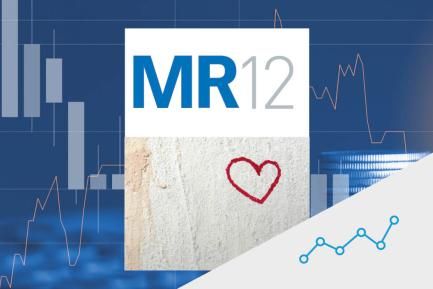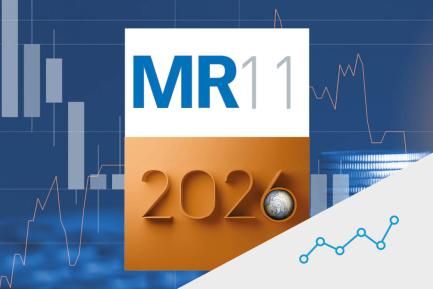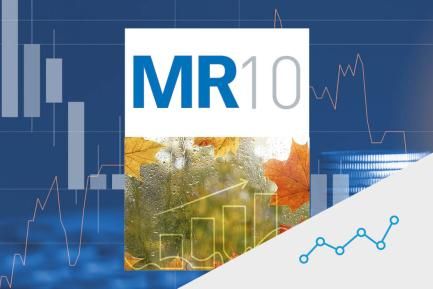
A positive month in the financial markets, albeit with a slowdown
The spring rally was dampened by signs of persistent inflationary pressures and a tightening of the hawkish tone among the major central banks, with rates expected to be «higher for longer».
Inflation and monetary policy retake centre stage
The financial markets welcomed the month of June with greater risk appetite, spurred on by the resolution of the debt ceiling crisis in the US and the continued stabilisation of the episodes of financial stress experienced in March and April. The spring rally, however, was dampened by signs of persistent inflationary pressures and a tightening of the hawkish tone among the major central banks, with rates expected to be «higher for longer». The loss of strength in the main economic sentiment indicators at the end of Q2 2023, together with some turmoils in the geopolitical sphere, also triggered fears among investors of a possible global recession. In the financial markets, the complex scenario was reflected in ups and downs in the main risk-bearing assets, which on balance closed the month up, although reducing the gains registered during the first weeks of June.

Déjà vu? The central banks warn of further rate hikes...
At their June meetings, the major central banks reiterated the need to maintain the restrictive bias in monetary policy in a scenario where policy rates, while increasingly close to the ceiling, would still climb a little more and would remain higher for longer. The month kicked off with unexpected rate hikes in Canada and Australia, where the central banks had decided to pause the rate hike cycle earlier this year. In the US, the Federal Reserve kept policy rates unchanged in the 5.00-5.25% range, in line with expectations, but surprised analysts by indicating that at least two more rate hikes were likely during the remainder of the year (as reflected in the dot plot). The implicit money market rates reflect a high probability of two additional rate rises, while rate cuts are not expected to begin until early 2024. On the other hand, as expected, the ECB did raise interest rates by 25 bps and placed the depo and refi rates at 3.50% and 4.00%, respectively. Moreover, spurred by the inertia in inflationary pressures according to the update of its macroeconomic scenario, the ECB signalled a further increase in rates was likely in July, albeit still following a data-dependent strategy. The latest messages from some ECB members have raised the possibility of further hikes in September – a scenario already reflected in the implicit money market rates.

... with some exceptions: Japan, China and other emerging economies
Other central banks in Europe also raised their official rates in June: by 50 bps in the United Kingdom and Norway and by 25 bps in Switzerland and Sweden. The Bank of Japan remained an outlier by leaving intact its policy of negative rates and its sovereign yield curve control strategy. Among emerging economies, there were two notable surprises. On the one hand, Turkey’s central bank announced an increase in official rates of 650 bps, marking the first rise since March 2021 and potentially some degree of a return to a more orthodox monetary policy. In the opposite direction, the People’s Bank of China surprised analysts with a 10-bp cut in reference rates, marking the first rate reduction since mid-2022 and what could be the start of a set of economic stimulus measures. The central banks of Hungary and Vietnam also announced cuts to their official rates, while in other countries we saw the first signals of possible rate reductions this year (Chile and Brazil).

Sovereign yields move to the beat of monetary announcements
The adjustment in investors' expectations regarding the future path of official rates was transmitted to a rise in sovereign yields, particularly in the case of short-term bonds. As a result, the inversion of the main sovereign yield curves became even more pronounced: in the US, the spread in yields between 10-year and 2-year bonds reached –100 bps, its lowest since the 1980s, while in the case of the German yield curve this spread stood at –80 bps, the lowest level since 1992. Inter-bank rates, meanwhile, rose on both sides of the Atlantic, and in Europe the 12-month Euribor exceeded the 4.0% threshold for the first time since 2008. On the other hand, risk premiums for European peripheral debt extended their good performance, with declines of around 5 bps in June in both Spain (to 100 bps) and Portugal (to 70 bps), despite the confirmation that the ECB will cease investing all maturities under the APP. The narrower differential in official rates and the greater risk appetite led to an appreciation of the euro against the dollar, which closed the month trading close to the 1.10 threshold.

International stock markets resume their upward path
In equities, stock market indices rose in June, albeit with a slowdown over the course of the month (the global MSCI index climbed 6.0% in the first half of June before falling 0.3% in the second half) and with an uneven performance by country and sector. US stock markets performed particularly well (6.5% in June and 15.9% since the start of the year for the S&P 500), narrowing the gap that had opened up relative to European indices (4.3% in June and 16.0% since the start of the year for the Euro Stoxx 50). At the sector level, the prospect of a scenario with higher rates benefited the banking sector, while the technology sector registered a slight slowdown but nevertheless remained at the forefront of the stock market rally in the year to date. Emerging markets, for their part, benefited from the increased risk appetite, particularly in Latin American countries.

Commodities: the focus remains on demand
As had already been the case in recent months, the oil price continued to fluctuate in the 70-80-dollar range for a barrel of Brent. Indeed, not even the surprise announcement of production cuts in Saudi Arabia (of an additional 1 million barrels a day in July) nor the military uprising in Russia were sufficient to allay investors’ fears of a cooling in demand. The weak tone in China’s economic data also exerted downward pressure on industrial metal prices. On the other hand, the higher temperatures in the northern hemisphere along with certain supply disruptions in some producing countries fuelled a rebound in natural gas prices (the Dutch TTF came to trade at 40 €/MWh), albeit at levels substantially below those of a year ago.



